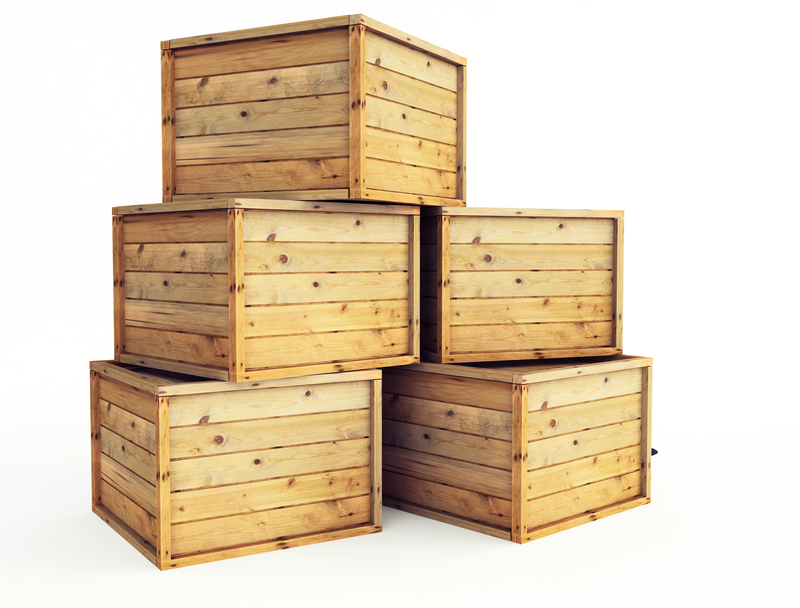Storing Your Sofa Like a Pro: Expert Tips for Preservation
Posted on 06/06/2025
Storing Your Sofa Like a Pro: Expert Tips for Preservation
Your sofa is more than just a piece of furniture--it's the heart of your living space, a place where memories are made, and comfort is paramount. But what happens when you need to store your sofa for a season, a move, or a home renovation? Proper sofa storage is essential to preserve its comfort, shape, and appearance for years to come. Follow our expert tips on how to store your sofa like a pro and ensure it stays in impeccable condition.
Why Proper Sofa Storage Matters
Whether your couch is an heirloom, a recent investment, or simply your favorite spot to relax, storing your sofa correctly ensures you avoid:
- Mold and mildew growth
- Infestation by pests
- Tears, dents, and unnecessary wear
- Permanent creases and sagging
- Unpleasant odors
Without proper care, your beloved sofa can suffer irreversible damage in storage. Investing time in professional-level preservation will save you money, hassle, and heartbreak when it's time to bring your sofa back into your home.

Preparing Your Sofa for Storage: Step-by-Step Guide
1. Clean Your Sofa Thoroughly
The first step in sofa storage preservation is to clean your couch from top to bottom. Dirt, moisture, and food crumbs can attract pests and cause stains.
- Vacuum all surfaces. Use upholstery attachments to reach under cushions, along seams, and beneath the frame.
- Spot clean stains. Treat spills with an appropriate cleaner for your sofa's material--fabric, leather, or synthetic. Test all cleaning products on a hidden area first.
- Launder removable covers. If possible, wash cushion and pillow covers according to manufacturer instructions. Allow everything to dry completely.
- Deodorize. Sprinkle baking soda over fabric sofas, let it sit for 15 minutes, then vacuum. Use a leather conditioner for leather sofas.
2. Disassemble When Possible
Many modern sofas have removable legs, arms, or backrests. Disassembling your couch will make moving easier and reduce stress on structural joints.
- Check the manual. If you bought your sofa new, the owner's manual should show you how to detach legs or arms safely.
- Bag and label hardware. Put screws and hardware in labeled bags and tape them to the sofa or keep them in a dedicated box.
- Wrap individual pieces. Cover detachable parts separately with protective materials (see below) to avoid scratching or losing components.
3. Protect Your Sofa Properly
Preserving your sofa in storage hinges on protecting it from dust, moisture, and pests. Avoid wrapping it in plastic, which can trap moisture and promote mold.
- Use breathable covers. Furniture blankets, pads, or moving blankets shield surfaces without trapping humidity.
- Wrap delicate components. Bubble wrap fragile legs or arms, especially wooden or metal parts prone to scratches.
- Secure the wrapping with tape. Never attach tape directly to upholstery or wood--it can pull away fibers and finish.
Choosing the Right Storage Location
1. Climate-Controlled Storage Units
Temperature and humidity are two of the biggest threats to long-term sofa preservation in storage. Climate-controlled storage units maintain stable environments, protecting your furniture from extreme heat, cold, and moisture.
- Minimize mold and mildew risk for fabric and leather sofas.
- Prevents wood warping or cracking from humidity changes.
- Reduces pest infestations and dust accumulation.
Non-climate-controlled garages and sheds may suffice for short-term storage, but for anything over a few weeks, climate control is the best bet for professional-level preservation.
2. Prepare the Floor
Sofas should never rest directly on the ground in storage, particularly in basements or concrete-floored units.
- Place pallets or protective mats beneath your sofa to allow air circulation and block ground moisture.
- Cardboard sheets can be an alternative, but ensure they don't trap moisture.
3. Consider Storage Orientation
To store your couch like a pro, always keep it upright on its feet. Laying it flat can damage the frame, and stacking items on top will compress the cushions permanently.
Do not:
- Balance couches on their sides or backs
- Stack boxes on top of the sofa
- Bend or fold the sofa if not designed for it
Expert Preservation Tips for Different Sofa Types
Fabric Sofas
- Pre-treat stains before storage to avoid setting them permanently.
- Spray with a fabric protector to shield against mold and mildew (test on a small area first).
- Keep the fabric off the floor to prevent dampness absorption.
Leather Sofas
- Use a leather cleaner and conditioner before wrapping to maintain suppleness.
- Avoid tightly wrapped plastic, as it can dry out or crack the leather.
- Check on your sofa every few months and recondition as needed if in long-term storage.
Sectional Sofas & Recliners
- Label individual pieces with painter's tape for easy reassembly.
- Cover moving parts (like recliner mechanisms) with rust inhibitor or lubricant.
- For sectionals, store each piece upright and individually wrapped.
Common Storage Mistakes to Avoid
- Storing when damp: Never put your sofa in storage when it's wet or even slightly moist.
- Skipping cleaning: Leftover debris and crumbs attract pests and odors over time.
- Over-tightening wrap materials: Restrictive coverings can deform sofa cushions or frames.
- Improper stacking: Never place weight on top of a stored sofa.
- Neglecting regular checks: For long-term storage, open the wrapper occasionally to inspect and air out the sofa.
Bonus Tips: Long-Term Sofa Protection Strategies
1. Invest in Professional Storage Supplies
Consider dedicated sofa storage bags, which are made of breathable materials and shaped for a perfect fit. Use silica gel packs near the sofa (but not on fabric) to absorb excess humidity.
2. Pest-Proof Your Storage Area
- Inspect storage units for cracks or pest entry points before moving in your sofa.
- Use natural repellents like cedar blocks or lavender sachets inside the storage area.
3. Document Furniture Condition
- Take clear photos of your sofa before packing. This helps in case of insurance claims or if you hire movers.
- Keep a log of when the sofa was moved, cleaned, and unpacked.
Bringing Your Sofa Out of Storage
When it's time to bring your couch back home, unpack it with care:
- Remove protective coverings and let the sofa air out in a ventilated area.
- Vacuum and clean the upholstery, then inspect for any signs of damage or moisture.
- Reassemble any parts, using the labeled hardware bags.
- For leather sofas, recondition the surface for renewed luster and flexibility.

Frequently Asked Questions about Sofa Storage
How long can I store my sofa without damage?
With the right storage conditions (climate control, cleaning, and covering), a sofa can be stored for several years with minimal risk. However, checking every 3-6 months is recommended for long-term storage.
What is the best way to wrap a sofa for storage?
Use furniture blankets or specially designed sofa storage covers. Avoid plastic wrap directly against upholstery, but use it on top if you need extra moisture protection.
Can I store a sofa in my attic, basement, or garage?
These areas are usually prone to temperature fluctuations and moisture build-up. If using these areas, take extra precautions: elevate the sofa off the floor, use silica gel packs, and ensure the space is as dry as possible.
Conclusion: Store Your Sofa Like a Pro--Preserve and Protect
Preserving your sofa during storage isn't just about keeping it out of sight; it's about treating it with the respect and care it deserves. From thorough cleaning and careful disassembly to choosing the right storage unit and using professional wrapping techniques, following these expert sofa storage tips will ensure your favorite furniture piece comes back as beautiful and comfortable as ever.
Remember: The time and effort you invest in proper sofa storage will pay off for years to come. Follow these steps, avoid storage pitfalls, and keep your living space ready to welcome your cherished couch back whenever you need it!



